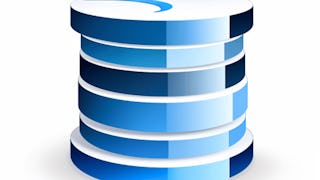This course focuses on foundational computing skills that support the work of a security analyst. It begins with an introduction to computer operating systems, followed by a closer exploration of Linux, an operating system commonly used by security professionals. By the end of this course, learners will be able to use the Linux command line through the Bash shell to navigate and manage the file system and to authenticate and authorize users, and they will also be able to use SQL to communicate with a database.



Tools of the Trade: Linux and SQL
This course is part of Google Cybersecurity Professional Certificate

Instructor: Google Career Certificates
Top Instructor
307,141 already enrolled
Included with 
(5,300 reviews)
What you'll learn
Explain the relationship between operating systems, applications, and hardware
Compare a graphical user interface to a command line interface
Navigate and manage the file system using Linux commands via the Bash shell
Use SQL to retrieve information from a database
Details to know

Add to your LinkedIn profile
1 quiz, 20 assignments
See how employees at top companies are mastering in-demand skills

Build your Computer Security and Networks expertise
- Learn new concepts from industry experts
- Gain a foundational understanding of a subject or tool
- Develop job-relevant skills with hands-on projects
- Earn a shareable career certificate from Google


Earn a career certificate
Add this credential to your LinkedIn profile, resume, or CV
Share it on social media and in your performance review

There are 4 modules in this course
This module provides an overview of operating systems. Learners will explore the relationship between operating systems, hardware, and software, and they will become familiar with the primary functions of an OS. They will be able to recognize some of the most common operating systems in use today and also understand how the GUI and command line both allow users to interact with the operating system.
What's included
9 videos7 readings5 assignments1 plugin
This module introduces learners to Linux, an open-source operating system commonly used in the security profession. Learners will understand the unique features of Linux and how it is used in the security profession. They will also explore the architecture of the Linux operating system as well as common Linux distributions. Additionally, they will understand how the Linux shell provides an interface for users to interact with this operating system.
What's included
9 videos8 readings4 assignments4 app items1 plugin
This module introduces Linux commands as entered through the Bash shell. Learners will use Bash to navigate the file system, to manage it, and to authorize and authenticate users. They will also discover how they can independently get the support that they need to use additional Linux commands.
What's included
12 videos11 readings1 quiz5 assignments12 app items1 plugin
In this module, learners will learn how to use SQL to communicate with databases. They will learn how to query a database and filter the results. They will also learn how SQL can join multiple tables together in a query.
What's included
12 videos14 readings6 assignments10 app items1 plugin
Instructor

Offered by
Recommended if you're interested in Computer Security and Networks


Packt


The Linux Foundation


Packt
Why people choose Coursera for their career




Learner reviews
5,300 reviews
- 5 stars
87.70%
- 4 stars
9.06%
- 3 stars
2.03%
- 2 stars
0.54%
- 1 star
0.65%
Showing 3 of 5300
Reviewed on Aug 15, 2023
The different learning aspects within the course really helped me to better understand each concept. The labs also help by adding repetition and letting me know where I need study further.
Reviewed on Sep 24, 2023
this course linux and sql is the 4th course series of google cyber security certification. This course is linux operating system , and sql. this is very helpful steps in my cyber security journey.
Reviewed on Mar 9, 2024
The concepts and the way they are explained, makes it relatable to every day usage. the instructor delivered the course in a very exciting and straight forward way. Thank you.
New to Computer Security and Networks? Start here.

Open new doors with Coursera Plus
Unlimited access to 10,000+ world-class courses, hands-on projects, and job-ready certificate programs - all included in your subscription
Advance your career with an online degree
Earn a degree from world-class universities - 100% online
Join over 3,400 global companies that choose Coursera for Business
Upskill your employees to excel in the digital economy
Frequently asked questions
Access to lectures and assignments depends on your type of enrollment. If you take a course in audit mode, you will be able to see most course materials for free. To access graded assignments and to earn a Certificate, you will need to purchase the Certificate experience, during or after your audit. If you don't see the audit option:
The course may not offer an audit option. You can try a Free Trial instead, or apply for Financial Aid.
The course may offer 'Full Course, No Certificate' instead. This option lets you see all course materials, submit required assessments, and get a final grade. This also means that you will not be able to purchase a Certificate experience.
When you enroll in the course, you get access to all of the courses in the Certificate, and you earn a certificate when you complete the work. Your electronic Certificate will be added to your Accomplishments page - from there, you can print your Certificate or add it to your LinkedIn profile. If you only want to read and view the course content, you can audit the course for free.
If you subscribed, you get a 7-day free trial during which you can cancel at no penalty. After that, we don’t give refunds, but you can cancel your subscription at any time. See our full refund policy.
More questions
Financial aid available,


